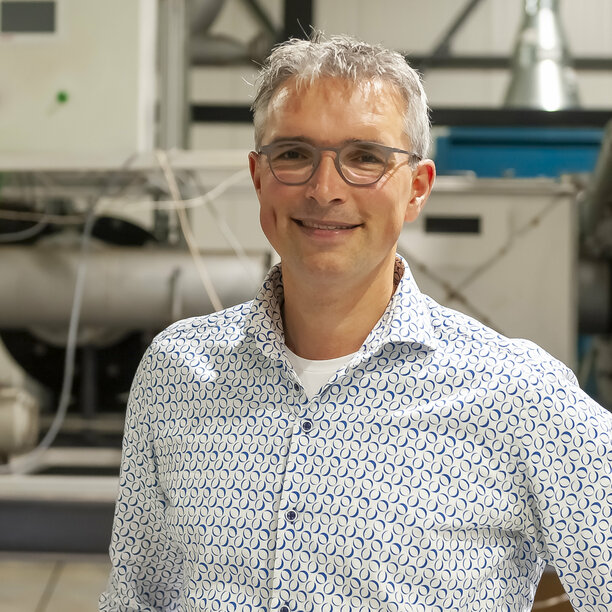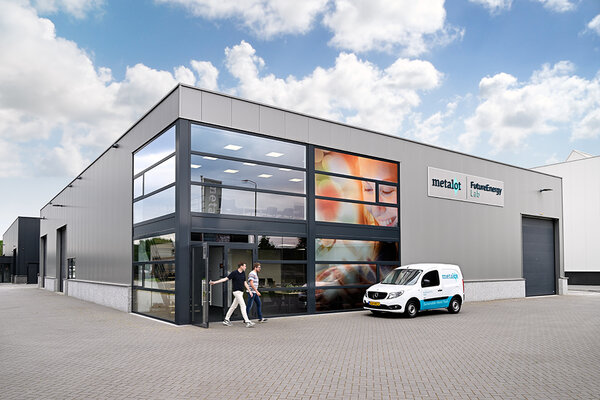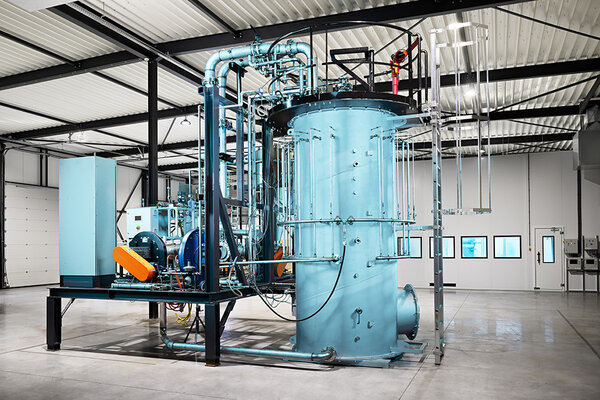Bridging the valley
Connecting application driven research and development to market introduction of innovative energy technologies. That is in a nutshell what the Metalot foundation aims to do, and in particular regarding the concept of using iron powder to store and transport sustainable energy. In an enthusing cascade of words, Metalot’s managing director Erik Langereis talks about the latest developments at the foundation.
‘Metalot was founded a couple of years ago as a non-profit organization that aims to accelerate innovations in the broad domain of metals & energy,’ Langereis explains. ‘We want to bridge the so-called valley of death between innovative ideas arising from scientific research and the actual market introduction of the resulting technology. To do so, we draft roadmaps, connect the right people, and provide the larger scale facilities that are needed to scale up from scientific lab experiments to industrially relevant prototypes.’
Ideas that arise at universities usually culminate in small scale proofs of principles or prototypes. When you take those to industry, they tend to say that you should keep working on it and come back in about ten years with a more mature and scaled technology, Langereis says. ‘We develop a vision and need for a certain technology, why it is important, what opportunities the technology offers the Netherlands, and what is needed to make it a reality. We at Metalot then connect the chain of people and expertise that is needed to further mature the idea to the phase where industry steps in, not within ten years, but as soon as possible. At our premises, we build pilots and demonstrators at a scale that truly proves the technology’s commercial value. As a result, we are appealing to SMEs and industries for project collaboration with ties to fundamental and applied research.’
Broadening scope
When Metalot started, its primary focus was on metal fuels. ‘But we are currently transitioning toward a broader scope,’ Langereis reveals. ‘We are exploring the possibilities to for example get involved in hydrogen and battery technology. Now, we are establishing what role would be a natural one for us to play and which people we should involve as figureheads for these technologies, as TU/e’s Philip de Goey is for the metal fuels topic.’
Since Metalot was established it received vital support from TU/e, Nyrstar, Province of Noord-Brabant, and the municipality of Cranendonck, Langereis emphasizes. ‘We are very grateful for the tight connections to the research group of Philip de Goey and to EIRES. Nevertheless, we certainly are also scouting for promising concepts and the relevant people to land at Metalot, beyond TU/e if necessary.’ In addition, student teams are very promising starting points for potentially interesting developments, Langereis stresses. ‘They combine enormous amounts of enthusiasm and optimism with goodwill, which enables them to get things moving fast. So, we have for example SOLID here to test its reactor concepts in our labs and we collaborate in several projects. And we are currently talking to the TU/e battery team to see how we can strengthen each other.’
Future Energy Lab
An important recent milestone for Metalot was the opening of the Future Energy Lab on 19 May 2022. This lab, located in Budel, is the first physical Metalot site. The activities here focus on further development of successful test set-ups that have outgrown the laboratory phase and are ready for the next step. During the opening, the new prototype of the Iron Power burner could be seen for the first time. This burner, built by consortium partners TU/e, SOLID, EM Group and Heat Power, is in the final testing phase before final endurance tests in an industrial environment in 2023. Besides the metal fuels set-up, the Future Energy Lab also now houses a Hydrogen Fieldlab, which enables safe and responsible facilities to experiment with hydrogen reactor prototypes. ‘At the moment, we primarily use hydrogen to regenerate the iron oxide back into iron for the metal fuels facility, but in the future, I imagine that we could also be building innovative types of electrolyzers here for hydrogen production.’
Create a buzz
Metalot has a constant eye out for people who are passionate about valorizing their ideas, Langereis says. ‘We can bring them into contact with the right people and help them transition mere academic research into other types of projects, which also gain interest from SMEs and industry. It is my personal ambition to help turn Metalot into a place buzzing with activity, where at any time there are people from academia, SMEs and industry building prototypes together. It is my sincere belief that collaboration, also between competitive industries, is crucial to realize the acceleration we so desperately need to make the sustainable transition we need to reduce our carbon footprint.’


